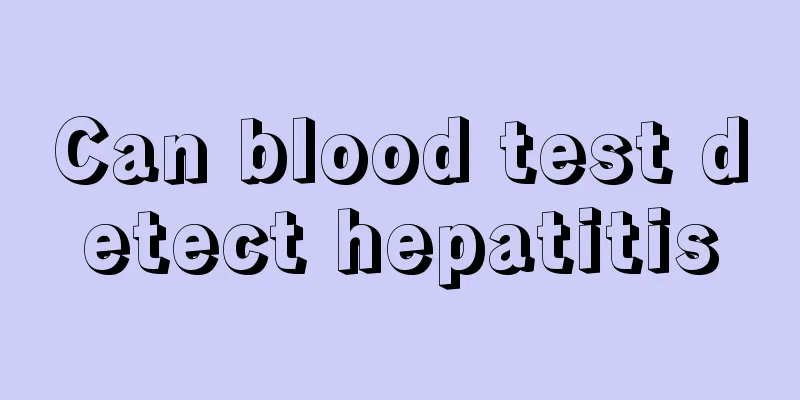What is Raynaud's syndrome?

|
Raynaud's syndrome is also called peripheral artery spasm. After the disease occurs, there will be obvious peripheral artery spasm, and the patient's skin will have color changes, which is more obvious. The cause of Raynaud's syndrome is still not fully understood. It is generally believed that it is related to genetic and environmental factors, and this disease can also cause the occurrence of other diseases. Raynaud's syndrome, also known as limb artery spasm, is a spasmodic disease of limb arterioles caused by dysfunction of the sympathetic nerves that control peripheral blood vessels. It is a syndrome in which spasm of small arteries in the extremities causes a series of skin color changes in the hands or feet. The disease was first proposed by Reynolds in 1862, hence the name. Traditionally, people with Raynaud's symptoms are divided into two types: 1. Primary, or Raynaud's disease, in which no underlying disease can be found and the symptoms and condition are alleviated. 2. Secondary Raynaud's phenomenon is also known as Raynaud's phenomenon, which occurs when a patient suffers from one or more diseases with more severe symptoms and course of disease. At present, Raynaud's disease and Raynaud's phenomenon have been merged and collectively referred to as Raynaud's syndrome. Causes The cause of Raynaud's disease is still not fully understood and is related to genetic and environmental factors. Cold stimulation, emotional excitement or mental stress are the main triggering factors. Other contributing factors include infection, fatigue, etc. To diagnose Raynaud's disease, it is necessary to rule out related diseases that cause Raynaud's phenomenon and identify the cause: 1. Immune diseases and connective tissue diseases: Almost all connective tissue diseases may be accompanied by Raynaud's phenomenon, and it may appear before other manifestations of connective tissue diseases. Such as scleroderma, mixed connective tissue disease, systemic lupus erythematosus, rheumatoid arthritis, dermatomyositis and Sjögren's syndrome. The vascular lesions of these diseases are mainly spasms in the early stages, which cause inflammation of the arterial wall after repeated attacks, followed by thrombosis and lumen occlusion, and ultimately lead to tissue necrosis and ulcers. 2. Chronic occlusive arterial disease: occlusive arteriosclerosis, thromboangiitis obliterans, and arterial embolism. 3. Nervous system diseases: including central and peripheral nervous system diseases, such as subthalamic tumors, spinal cord tumors, myelitis and nerve damage. 4. Drug factors: ergot and other antispasmodics, beta-blockers, contraceptives, cyclosporine, heavy metal salts and discontinuation of nitroglycerin, etc. 5. Occupational factors: such as repetitive vibration damage and hypothenar hammer syndrome (ulcerative arterial thrombosis). Commonly found in cast iron workers, mechanics, stonemasons, typists, pianists, etc. It can also occur due to direct damage to the arteries, cold injury, and exposure to vinyl chloride at work. |
<<: What is thumb muscle pain?
>>: Can Meige syndrome be cured?
Recommend
How to take care of keratinized skin?
Skin keratinization refers to the condition where...
What are the common causes of lung cancer? Five high-risk factors for lung cancer
Clinical studies have found that the vast majorit...
Is skin cancer prone to recurrence
Is skin cancer prone to recurrence? Skin cancer i...
What role does vitamin B group play in the human body
Vitamin B group plays a very important role in ma...
What's wrong with stomachache on a cloudy day
Changes in weather also have a key impact on a pe...
What tests should be done if an ovarian tumor appears
Ovarian malignant tumor disease is a disease that...
What to do if your legs are thick and not straight
Not everyone has a pair of straight and slender c...
What are the best treatments for nasopharyngeal carcinoma? What should patients undergoing radiotherapy pay attention to?
What is the best treatment for nasopharyngeal car...
What are the early extrapulmonary manifestations? The four early symptoms of lung cancer should not be ignored
Speaking of cancer, everyone's first reaction...
What drug is effective for brain cancer
Brain tumor is a common malignant tumor. There ar...
Should lipstick be refrigerated or frozen after it melts
Lipstick or lip balm and other cosmetics must be ...
Causes of cysts on the neck
There are many lymph nodes on the neck, so many p...
How much is the hospitalization cost for hamartoma
What is the hospitalization cost for hamartoma? T...
Treatment of pharyngeal fistula caused by laryngeal cancer complications
Pharyngeal fistula is a common complication after...
How to use potatoes to treat acne
Acne is very common and has a great impact on the...









